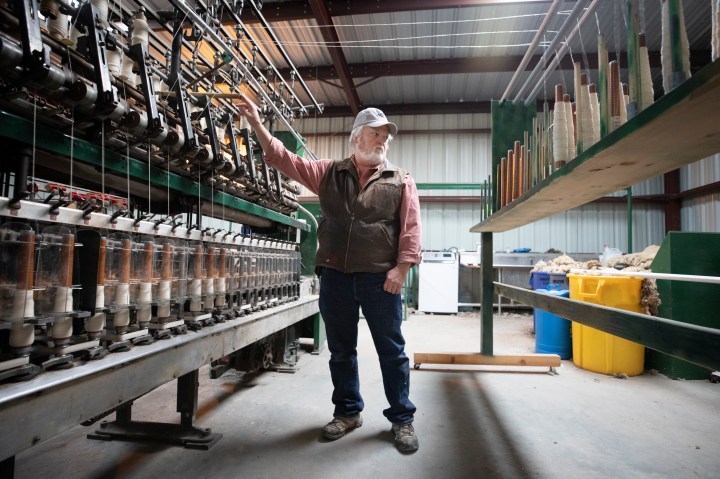
Last of the mohair and wool spinners — how two Texan mills keep the state’s tradition alive
Last of the mohair and wool spinners — how two Texan mills keep the state’s tradition alive

Texas has a reputation for being a cattle state. But not that long ago you could have also credibly called it a sheep state, or a goat state. In the mid-twentieth century, Texas dominated the market for wool and mohair, from Angora goats. Much of that industry is now gone. But not all of it.
At the Marathon Basin Wool Mill recently, about 280 miles southeast of El Paso, Seth Warnock adjusted the gears of a spinner; a machine that converts wool into usable yarn.
He turned it on, only to quickly shut it off when a strand of wool got tangled in the machine. Warnock is used to complications like this. Although the mill itself is just three years old, his family has raised sheep on the same land since 1829. His wife Bonnie helps out, but mostly he works alone, tinkering in a shed in the west Texas desert.
“We built the building, poured the floor, bought the equipment, moved it in and then learned how to run it,” Warnock said.
He sorted out the problem with the spinner, turned it back on, and the machine threaded yard after yard of soft, clean, off-white yarn onto spools. Processing wool appears to be fairly automated, but it’s difficult, requiring a lot of attention to detail, and the machines can cause injuries.
Dawn Brown, who runs the only other woolen mill in Texas — Independence Wool and Mohair, 90 miles northwest of Houston — is also familiar with its ins and outs.
“There’s all the maintenance of the machines, there’s all the supplies, there’s also the safety factor,” she said.
Brown’s family has deep roots in the industry, but her first career was as a gynecologist. She took up knitting as part of rehab for a shoulder injury, which started her down the path to making the mill her full-time job.
It’s a business that was once much more common in Texas. There were about two dozen mills started in the late 1800s — by the mid-twentieth century, they were dwindling.
“We used to have 10 million sheep, we used to have four million goats across central and west Texas,” Brown said.
Now, there are fewer than a million of each. In the late 1980s, Texas produced over $30 million worth of wool, and about the same amount of mohair per year. Today, it’s down to about $3 million apiece.
Over time, synthetic material replaced wool. Processors in places like China and South Africa produced fiber more cheaply, and Texas changed.
“Ranches are sold. The younger generation goes off to do other things,” Brown said. “There’s all kinds of external factors that influence the industry, now it’s so small, you don’t want it to go away.”
That’s a big reason she and Warnock spend so many hours picking cedar twigs out of wool, spinning yarn, fixing machines. It’s certainly not a get-rich-quick scheme. Warnock is just now turning a profit, mostly by selling yarn online for around 20 dollars a skein on the craft website Etsy.
“It was 10 months from the day we launched it ‘til the day we made our first sale,” Warnock said. “You had to have some grit to stay with it.”
It’s a lifestyle that fewer and fewer Texans feel connected to. Repairing that disconnect is part of Brown’s mission with the mill. She’s started an apprentice program, and gives lectures around Texas about wool milling.
“If you can impart that to a younger generation, to be proud of their heritage, to be proud of their land, maybe they’re going to stay. Maybe they’re going to come back. I did,” Brown said.
There’s a lot happening in the world. Through it all, Marketplace is here for you.
You rely on Marketplace to break down the world’s events and tell you how it affects you in a fact-based, approachable way. We rely on your financial support to keep making that possible.
Your donation today powers the independent journalism that you rely on. For just $5/month, you can help sustain Marketplace so we can keep reporting on the things that matter to you.


















